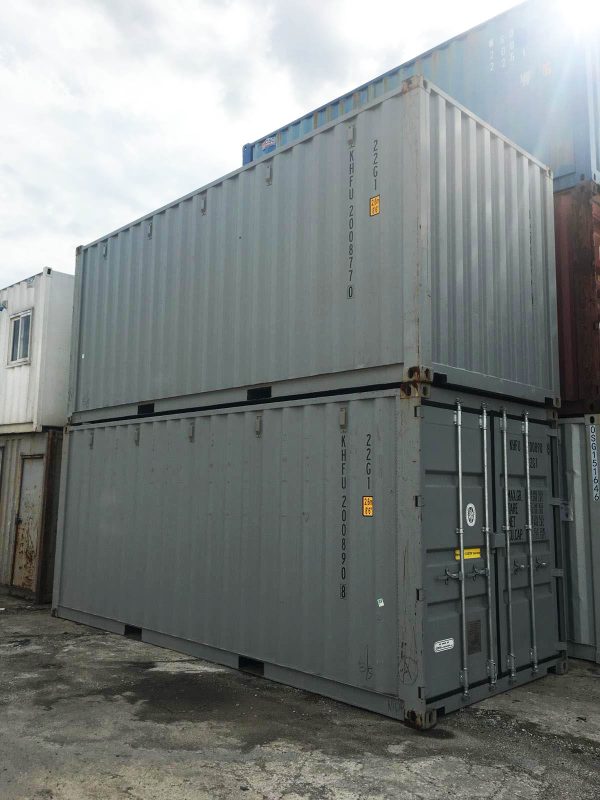The Pros and Cons of Using Shipping Containers for Urban Offices

As urbanization increases, the demand for innovative, flexible, and sustainable office spaces has surged. One solution that has gained popularity is using shipping containers for urban offices. These steel structures, originally designed for transporting goods, are being repurposed into modern workspaces that blend affordability, sustainability, and industrial style. While shipping container offices offer numerous benefits, they also come with certain drawbacks. Here’s a closer look at the pros and cons of using shipping containers for urban offices.
Pros of Shipping Container Urban Offices
1. Affordability
One of the biggest advantages of using shipping containers for urban offices is the cost savings. Traditional office buildings in metropolitan areas can be prohibitively expensive, especially with skyrocketing real estate prices. Shipping containers provide a cost-effective alternative. The initial purchase of a container is relatively affordable compared to building from scratch, and with efficient design and planning, the overall costs can remain low. Businesses and startups looking for budget-friendly office solutions often turn to shipping containers as a viable option.
2. Sustainability
Shipping container offices offer a green solution in the construction industry. Repurposing containers reduces waste and promotes recycling. Instead of discarding or leaving these massive steel boxes unused, they are transformed into functional spaces, contributing to environmental sustainability. Additionally, many container offices incorporate eco-friendly features such as solar panels, rainwater harvesting systems, and energy-efficient insulation, further reducing their carbon footprint.
3. Flexibility and Modularity
Shipping containers are highly versatile and can be adapted to various designs. Their modular nature allows them to be easily stacked, rearranged, or expanded as needed. Whether you need a small office space or a multi-story office complex, shipping containers offer the flexibility to customize layouts based on specific business needs. This adaptability is especially appealing in urban settings, where space is often limited, and companies may need to adjust their office footprint over time.
4. Quick Construction and Mobility
Compared to traditional construction methods, building with shipping containers is fast and efficient. Containers can be modified off-site and then delivered and installed in a fraction of the time it takes to build a conventional office structure. This accelerated timeline is particularly beneficial for businesses that need to set up their offices quickly. Moreover, shipping container offices are mobile. If your company relocates, the container office can be easily transported to a new location, offering unparalleled convenience.
5. Unique Aesthetic Appeal
Shipping container offices have a distinct, industrial aesthetic that can set businesses apart. In urban areas where architecture is often homogenous, container offices can create a visually striking presence. Their modern, minimalist design appeals to companies seeking a contemporary look and feel, especially in creative industries. The ability to customize the exterior and interior further enhances the visual appeal of container offices, making them stand out in a crowded urban landscape.
Cons of Shipping Container Urban Offices
1. Insulation and Temperature Control Issues
While shipping containers are durable and weather-resistant, they are not designed for human habitation or work without significant modifications. Insulating a steel box to create a comfortable, temperature-controlled environment can be challenging and expensive. Without proper insulation, container offices can become unbearably hot in the summer and freezing in the winter. Urban environments with extreme climates may require additional investments in heating, ventilation, and air conditioning (HVAC) systems to maintain a comfortable workspace.
2. Limited Space and Layout Constraints
Shipping containers come in standard sizes, typically 20 or 40 feet long, with limited width and height. This can create challenges when designing an office layout, especially for larger teams or businesses with specific spatial requirements. While containers can be combined to create larger spaces, the modular nature of the design can still feel restrictive compared to more traditional office spaces. For companies that prioritize open-plan layouts or need extensive square footage, container offices may not be the most practical option.
3. Zoning and Permitting Challenges
Urban areas often have strict zoning regulations and building codes that can complicate the installation of shipping container offices. Depending on the city, obtaining the necessary permits for using containers as office spaces may involve a lengthy approval process. Additionally, some municipalities may have specific design or safety requirements that add to the overall cost and complexity of the project. It’s essential to research local regulations and consult with professionals before committing to a shipping container office in an urban setting.
4. Potential Structural Modifications
While shipping containers are incredibly sturdy, they may require significant modifications to meet the needs of an office environment. This includes adding windows, doors, plumbing, and electrical systems. Cutting into the steel walls for these additions can compromise the structural integrity of the container, requiring reinforcement. These modifications, along with the necessary installation of utilities, can drive up the overall cost and negate some of the initial affordability.
5. Limited Lifespan
Shipping containers, while durable, are not immune to wear and tear. Depending on the quality and condition of the container, it may have a limited lifespan before it starts to rust or deteriorate, particularly in urban environments exposed to pollution and moisture. Although regular maintenance can extend the life of a container office, businesses must consider the potential long-term durability issues and the costs associated with repairs or replacement.
Conclusion
Shipping containers offer a unique and innovative solution for urban office spaces, combining affordability, sustainability, and flexibility. However, they also come with challenges, such as insulation issues, limited space, and potential zoning hurdles. For businesses looking to make a bold statement while minimizing costs and environmental impact, shipping container offices can be a great choice. However, it’s essential to weigh the pros and cons carefully and ensure that this unconventional office space aligns with the specific needs of the company and the urban environment in which it operates.

